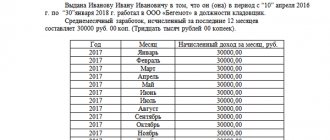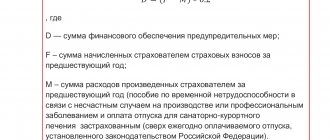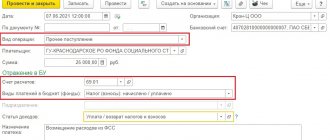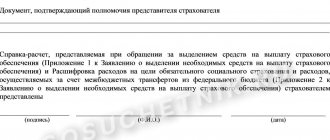Economic disputes and violation of contractual obligations by counterparties may give rise to litigation. Claims from regulatory authorities against organizations that do not pay taxes and fees on time are also not uncommon. The court may rule in favor of one side or the other. The accounting service is faced with the need to reflect the amounts of actual damage, lost profits, legal costs, repayment of debt to the injured party, and payment of such amounts for won lawsuits. The issues of tax accounting of “judicial” amounts are also relevant.
How is damage different from harm and losses ?
Legal costs
Legal costs represent state fees and expenses in connection with the consideration of the case in court. The Arbitration Procedure Code of the Russian Federation (Article 101) and the Code of Civil Procedure of the Russian Federation (Article 94) refer to them, in particular:
- expenses for lawyers, representatives of the parties;
- expenses for conducting an inspection and collecting evidence;
- living expenses due to the need to appear in court, etc.
Indicative in this sense is the determination of the Constitutional Court, considering the dispute between an organization and the tax service No. 22 dated 20-02-02, which equates legal costs to losses incurred by the organization as a result of unlawful actions of the Federal Tax Service, and prescribes mandatory compensation in full. Some of them, in particular the costs of a lawyer and a consultant, for an organization that is just filing a lawsuit, are pre-trial; in fact, the trial has not yet taken place, but the costs have been incurred.
How to compensate for material damage ?
Situation: an organization files a lawsuit against a counterparty. It is unknown whether the claim will be won, and the costs of a lawyer have already been incurred. How to reflect them in NU and BU? Let's consider the case when an organization is on OSNO as the most complex in terms of accounting nuances.
The Tax Code of the Russian Federation (Article 252) allows you to include economically justified amounts in expenses. In this case, this condition is met: the economic feasibility lies in the possibility of recovering the debt from the counterparty in court. Confirmation of expenses consists of the presence of any document, for example, an act on the provision of services by a law firm, signed by both parties, recording the specified business transaction. Please note that documents evidencing payment for services, for example, bank payment orders, can only supplement the act, but not replace it as confirmation. Expenses are most often recognized on the date of signing the act (although, according to Article 272-7, paragraph 3, the organization may provide for other deadlines, for example, in accordance with the provisions of the agreement, on the last date of the reporting or tax period).
Expenses are classified as other and are reflected in the BU by posting D 91 K 60 (or 76).
What to consider if the culprit is known
An employee can admit to damaging property himself. Or witnesses and evidence help find the culprit.
The culprit is obliged to compensate for the damage incurred by the organization: the costs of restoring and repairing a fixed asset or purchasing the same property with the same degree of wear and tear at the time of loss/damage. The estimated purchase amount is the residual value of the damaged OS according to accounting data.
According to the Labor Code of the Russian Federation, the employee bears either limited or full financial liability. The full amount can be recovered in cases from Art. 243 Labor Code of the Russian Federation. For example, if you ruined the OS while drunk. Or intentionally caused damage.
In other situations, the employee reimburses an amount not exceeding his average monthly earnings. The manager can withhold it independently, without the employee’s consent, provided that the amount does not exceed 20% of the accrued salary without personal income tax.
If the employee voluntarily agreed to compensate for the damage incurred, it is enough to agree in writing with the manager on the timing, amount and method of payment of the debt.
If the dispute is lost
A court decision in favor of a third party may contain a requirement to pay both losses and lost profits as a result of the actions of the organization that lost the court (Civil Code of the Russian Federation, Art. 15-2).
Attention! The amount of lost profits determined to be paid cannot be recognized as income tax expenses, from the point of view of the Ministry of Finance (see Letter No. 03-03-10/25645 dated 04-07-13), although such actions do not contradict the norms Art. 256 clauses 1-13 of the Tax Code of the Russian Federation. From the above it follows that the organization, including such amounts in expenses, must be prepared for disputes with the fiscal authorities.
Amounts are recognized as expenses on the date of actual payment (cash basis) or the date of judgment (accrual basis). Postings are generated based on the provisions of PBU 18-02 and using the current chart of accounts. Postings for the company on OSNO:
Before the court's decision:
- Dt 91-2 Kt 96 - reflects the amount of the estimated liability for damages.
- Dt 09 Kt 68 is a deferred tax asset for it.
After a court decision in favor of the organization’s counterparty:
- Dt 96 Kt 76 - loss to be compensated by court decision.
- Dt 91-2 Kt 76 - lost profits subject to compensation by court decision.
- Dt 68 Kt 09 - the deferred tax asset is repaid.
- Dt 76 K 51 - the entire amount of debt was paid to the counterparty by court decision.
If payment of state fees and other legal costs is awarded to the losing party, then, according to the decision, its payment is recorded by posting: Dt 68 Kt 51 (accrual through account 91). Lawyer services and other legal costs are charged, as already mentioned, to account 91, and payment is made by entry Dt 76 (60) Kt 51.
How to recover damages from an employee ?
Postings to account 73 for loan accounting
| Debit | Credit | Operation name |
| 73/1 | 50 (51) | The loan amount was issued to the employee. |
| 73/1 | 91/1 | Interest accrued on the loan. |
| 50 (51) | 73/1 | The employee paid the interest or repaid the loan. |
If an employee is provided with a loan on preferential terms: low interest or interest-free, then it is considered that the employee received additional income in the form of material benefits from savings on interest. This amount of material benefit is calculated as ¾ of the refinancing rate of the Bank of Russia, and from this amount the employee is obliged to pay personal income tax at a rate of 35% and fill out a 3-personal income tax declaration.
Let's consider this case using an example:
Example of issuing a loan to an employee
The organization issued an interest-free loan to the employee for 1 month of 20,000 rubles. The refinancing rate on the date of receipt of the loan was 18% per annum.
Calculation of the amount of material benefit:
20,000 * 3/4 * 18% / 12 months. = 225 rubles.
Calculation of personal income tax on the amount of material benefit:
225 * 35% = 78.75 rubles.
If the loan is issued for several months, then each month you need to calculate the material benefit and personal income tax depending on the refinancing rate.
If the dispute is won
A won lawsuit leads to the creation of “income” for the organization, which should be reflected in the accounting records. The state fee for the court, according to the Tax Code of the Russian Federation (Articles 13-10), is a federal fee. Article 265-1 (clause 4) allows the amount of state duty to be included in non-operating expenses; the same position is contained in the letter of the Ministry of Finance No. 03-03-06/1/597 dated 20-09-10 and a number of similar ones.
Non-operating expenses in the form of taxes and mandatory payments are recognized in accordance with Art. 272-7(1) of the Tax Code of the Russian Federation, as of the accrual date. State duty is payment for claims in court, the date of its recognition should be considered the day the claim was filed with the judicial authorities (explanations are given in the letter of the Ministry of Finance No. 03-03-06/2/176 dated 22-12-08).
Attention! Regardless of the fact of subsequent recovery from the losing party to the dispute, state duties are included in income tax expenses (registered by the Federal Antimonopoly Service of the North-West District, case No. A56-24492/2007 dated 07/21/08).
A “positive” court decision that has entered into force is the basis for including the amounts of penalties, legal costs and other amounts of sanctions received from the losing party into non-operating income (Article 350 of the Tax Code of the Russian Federation).
At the same time, the debt that has become the subject of legal proceedings is not included in income for the purposes of NU, based on the meaning of the articles of Art. 249, 39 of the Tax Code of the Russian Federation and subsequent clarifications of the Ministry of Finance (letter No. 03-03-06/1/597 dated 2-09-10). However, this issue still remains controversial, and the organization must be ready to provide explanations to the tax service regarding the specified amount or defend its position in court.
With regard to the amount of the debt and the accrual of VAT on it, the question remains open, since the fact of sale of goods, work, or services in this case is absent (Article 146 of the Tax Code of the Russian Federation).
As already mentioned above, amounts related to the court decision are posted through account 91, state duties to the court through account 68 (accrual by credit, transfer to the budget by debit). To settle with a debtor under a court decision, as a rule, they use account 76, opening a “Settlements on claims” subaccount for it. Analytical accounting is organized by debtors and individual claims.
Postings:
- Dt 51 Kt 76 – receipt of money from the counterparty.
- Dt 76 Kt 91 – reimbursed by the state. fees and damages for legal proceedings.
The debtor’s debt (repaid) can be posted internally to the Kt subaccount “Settlements for claims” of account 76 or similarly using account 60 to Kt 76. The repayment must be recorded by posting Dt 51 Kt 76.
The outstanding debt is written off.
Accounting for loans issued to an employee
When issuing loans, an employee must enter into a written agreement, even if the loan amount is not significant (according to Article 808 of the Civil Code of the Russian Federation).
The agreement must specify the loan amount, term and repayment procedure. The legislation does not limit either the size of the loan or the repayment period. If the loan repayment period is not specified in the contract, the employee is obliged to repay it within 30 days from the moment the organization requests it. (Article 810 of the Civil Code of the Russian Federation).
As a rule, loans to staff are issued interest-free. That is, the employee returns the same amount he takes. If interest is accrued, then they are taken into account as part of other income; account 91 is used to reflect them.
| ★ Best-selling book “Accounting from scratch” for dummies (understand how to do accounting in 72 hours) > 8000 books purchased |
Main
- Compensation for damage by a court decision is recorded in accounting using account 91. For accounting for each counterparty and claim, it is advisable to use account 76 with the opening of the corresponding sub-account.
- Payments compensating the counterparty for damages by court decision are made using account 96.
- State duties and legal costs are included in both income and income tax expenses.
- With regard to the inclusion of debt amounts in income under OSNO and the calculation of VAT, the issue has not been fully resolved and suggests a dispute with the fiscal authorities.
Compensation for material damage associated with loss and damage to rented property
According to the law, shortages of property and damage to them include:
- for production or distribution costs - within the limits of natural loss;
- at the expense of the guilty persons - in excess of the norms of natural loss;
- on financial results - in excess of the norms of natural loss, if the perpetrators are not identified or the court refuses to recover damages from them.
Example 1
As a result of the arson, the materials warehouse was completely burned down. According to financial accounting data, the initial cost of the burned warehouse building is 70,000 rubles, the amount of depreciation accrued at the time of the fire is 25,000 rubles. The cost of burnt materials is 37,000 rubles. The perpetrators have not been identified.
Losses caused by fire will be written off as follows:
Dt 01/2 Kt 01/1 - for the amount of the initial cost of the building - 70,000 rubles;
Dt 02 Kt 01/2 - for the amount of accrued depreciation - 25,000 rubles;
Dt 94 Kt 01/2 - for the amount of the residual value of the building - 45,000 rubles;
Dt 94 Kt 10 - for the amount of the cost of materials - 37,000 rubles;
Dt 99 Kt 94 - for the amount of loss from the fire - 82,000 rubles.
Please note that the amounts of shortage or damage to the goods identified upon acceptance are attributed by the buyer:
- within the limits of natural loss in Dt 94 with Kt 60;
- above the norms of natural loss in Dt 76/2 “Calculations for claims” with Kt 60.
If the cost of missing or stolen valuables is recovered from the perpetrators at prices exceeding their book value, then the difference between the value of the missing valuables credited to account 73/2 “Calculations for compensation of material damage” and their value reflected on account 94 , is credited to account 98 “Deferred income”.
As the amount due from the guilty person is collected, the specified difference is written off from account 98 “Deferred income” to account 99 “Profits and losses”.
Example 2
The fact of theft by an employee of the organization of construction materials with a total value of 33,000 rubles was revealed.
Materials have not been returned. The amount of loss caused to the organization was determined by the court in the amount of 40,000 rubles.
Theft of materials and compensation for losses will be reflected in the organization’s accounting records as follows:
1) the book value of the stolen materials is written off:
Dt 94 Kt 10 – 33,000 rub.;
2) the amount of compensation awarded by the court is reflected:
Dt 73/2 “Calculations for compensation for material damage” Kt 94 – 33,000 rubles;
Dt 73/2 “Calculations for compensation for material damage” Kt 98 “Deferred income” - 7000 rub.
As the amount of damage determined by the court is recovered from the perpetrator, the following entries will be made in the accounting records:
Dt 50 Kt 73/2 “Calculations for compensation of material damage” - for the amount of funds contributed;
Dt 98 Kt 99 - for part of the amount of profit listed on account 98, attributable to the amount of deposited funds.
Accounting entries for accounting for settlements of claims and compensation for material damage are presented in table. 2.4
Table 2.4 Accounting entries for accounting for settlements of claims and compensation for material damage
| Contents of operation | Debit | Credit |
| 1) A claim was made to the supplier for violation of the terms of the contract | ||
| 2) The claim amount has been received | ||
| 3) The amounts of the claim that are not subject to recovery are reflected | ||
| 4) The amount of the fine (penalty, penalty) recognized by the payer or awarded by the court has been accrued |
The costs of your organization to compensate for damage caused to the counterparty (for example, in the event of your refusal to fulfill obligations under the contract) should be taken into account as part of other expenses (clause







